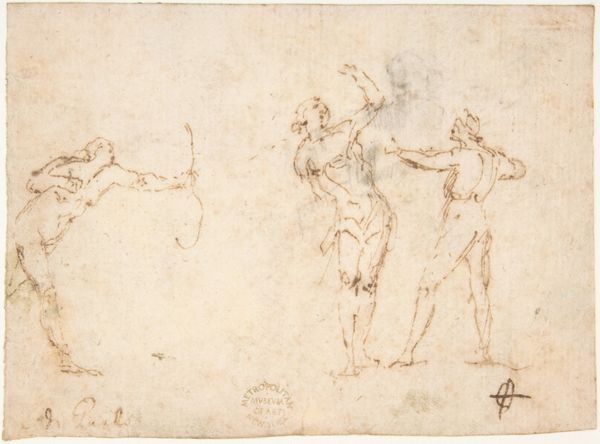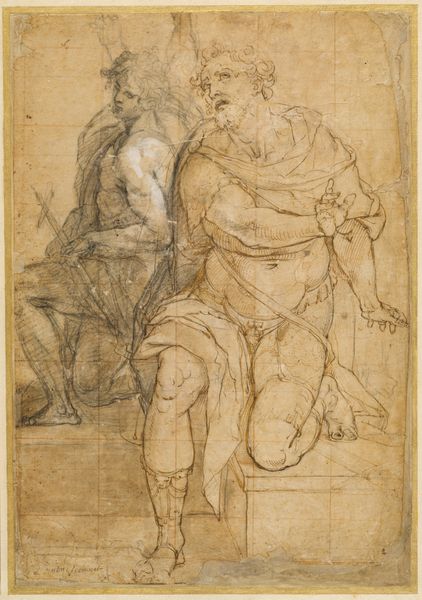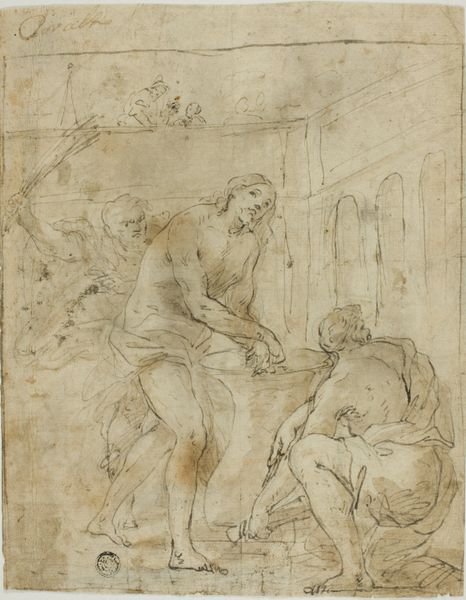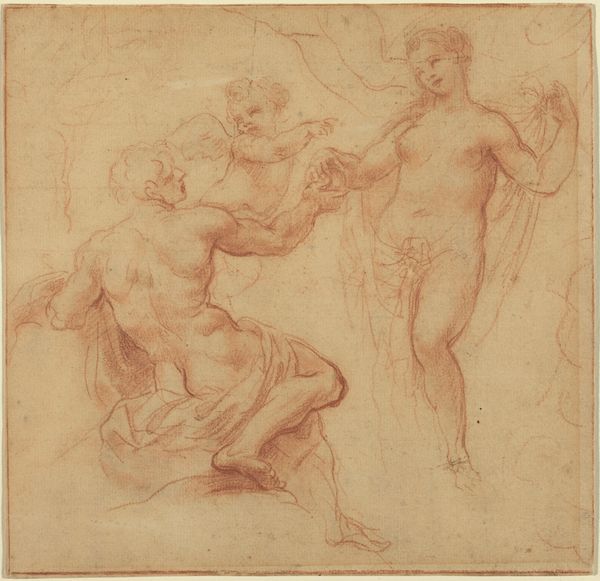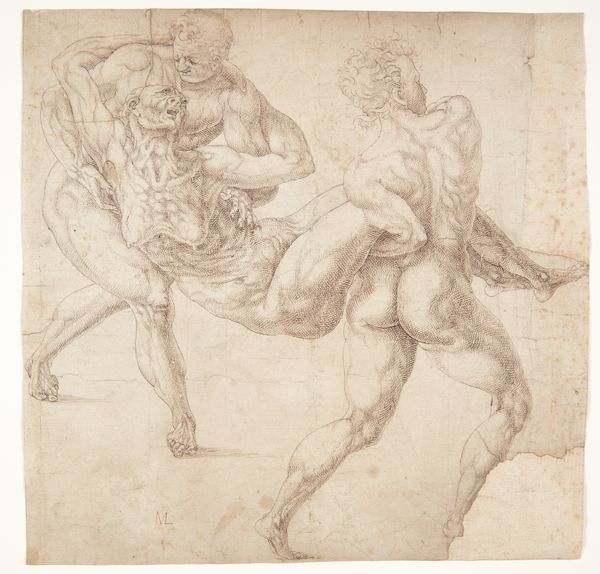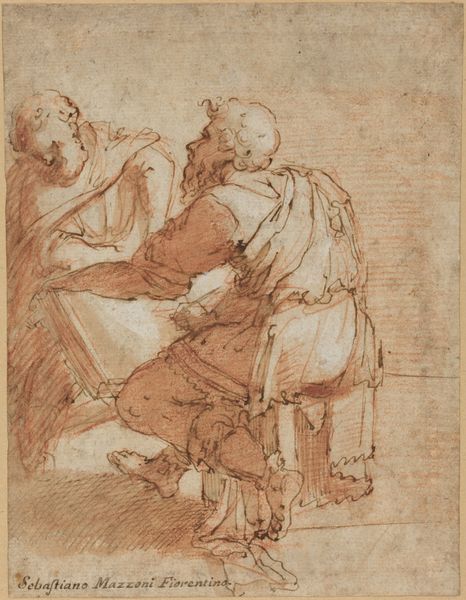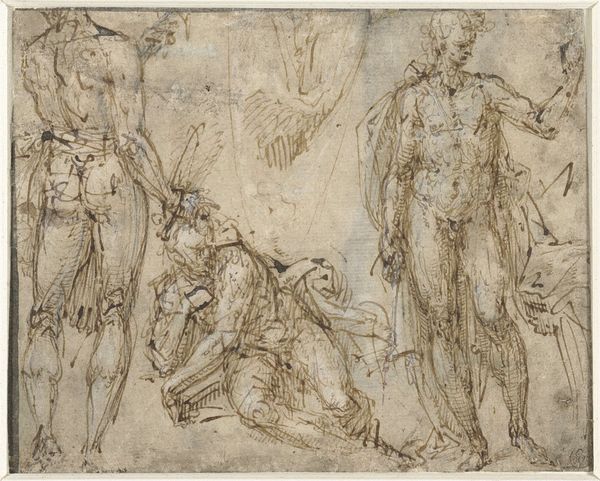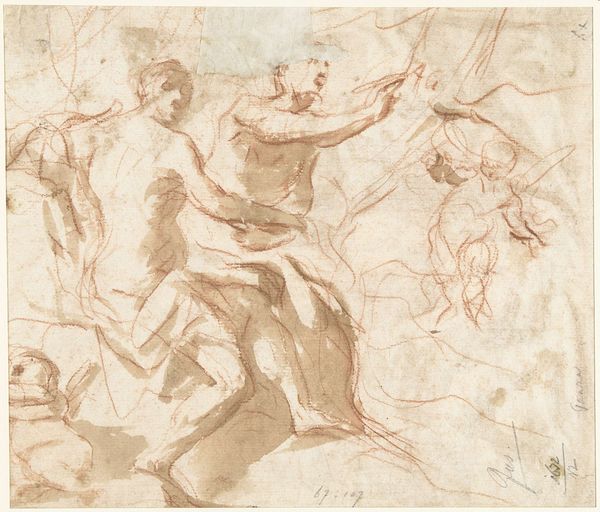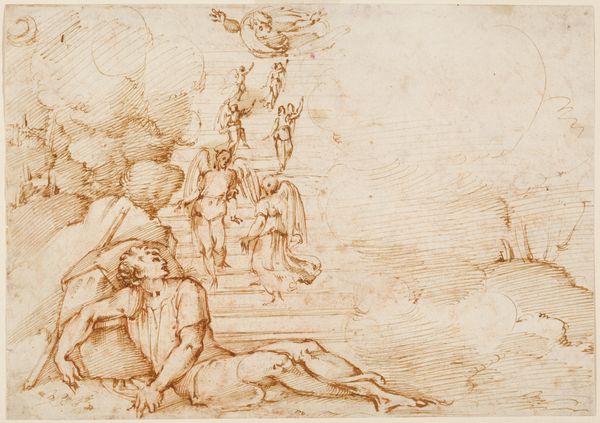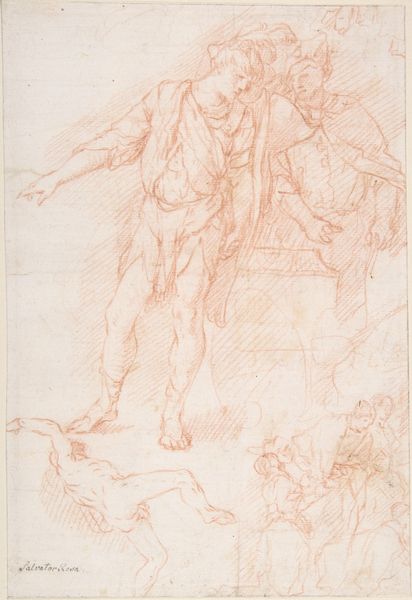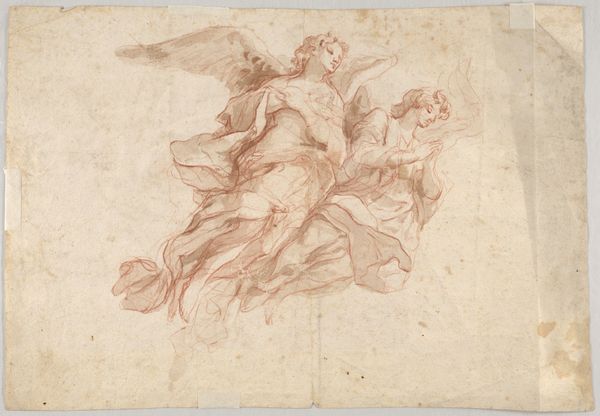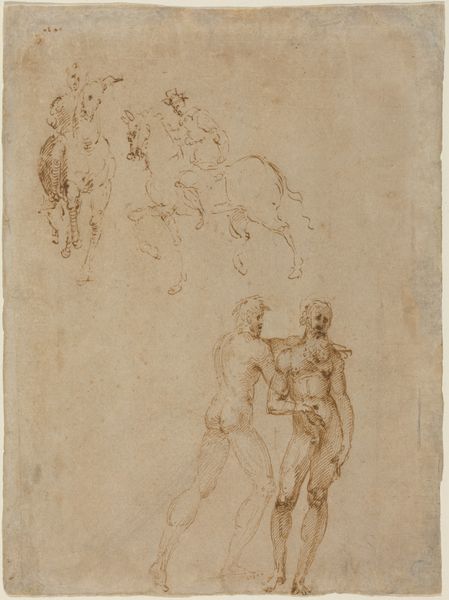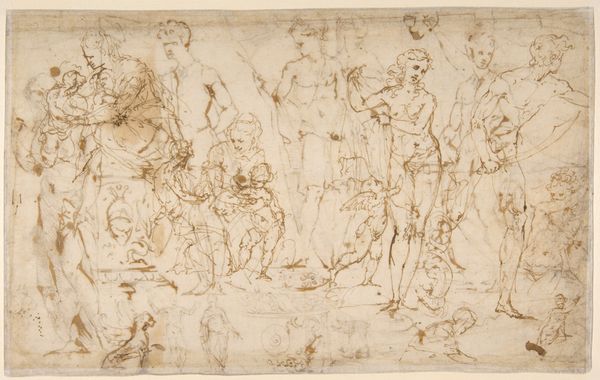
drawing, charcoal
#
portrait
#
drawing
#
charcoal drawing
#
figuration
#
11_renaissance
#
charcoal
#
italian-renaissance
Dimensions: overall: 18.1 x 20.1 cm (7 1/8 x 7 15/16 in.)
Copyright: National Gallery of Art: CC0 1.0
Curator: Let's take a look at these "Figure Studies," a charcoal drawing by Federico Barocci. The artist was an Italian Renaissance painter. It’s intriguing to observe Barocci’s preparatory exploration here. Editor: My first impression is one of intense observation. There’s a sense of struggle or perhaps contemplation in these figures, their bodies rendered with such careful attention to musculature and pose. What can you tell me about the social climate from which Barocci was drawing from? Curator: Barocci, active during the late Renaissance, was influenced by the Counter-Reformation, so art was meant to inspire piety and religious devotion. While these are figure studies, they reflect an interest in depicting the human form realistically to serve religious messaging. Editor: So, considering this drawing through the lens of religious and social expectation, the figures challenge traditional power structures of the time? Do they invite critical reflections on these expectations? Curator: To an extent. While Barocci wasn't overtly rebelling, he did move away from the idealized forms of the High Renaissance. The rawness of these studies could reflect a search for greater emotional truth and human vulnerability. The choice of charcoal further emphasizes this more personal and immediate engagement. The softness and flexibility of charcoal allow for experimentation in shading and texture that would have likely been absent from ink or paint mediums, giving them an individual expression. Editor: It feels as though the medium is a rebellion of sorts, when juxtaposed to the political themes you are bringing up. There is a push and pull of established norms, a very clever observation on Barocci’s artistic liberties within the greater historical and artistic landscape. Curator: The way Barocci depicts movement and the interplay between light and shadow shows he wasn’t confined by the artistic standards of his period. He foreshadows aspects of Baroque dynamism. These figures might have been experiments for painting composition in a time when paintings often featured less emotive and dynamic portraits. Editor: Seeing these figure studies, in terms of how art serves specific socio-political purposes and even foreshadows a new movement of creative freedom of expression, really broadens my understanding and appreciation. Curator: Absolutely, examining artworks like this, considering artistic expression in conversation with historical context gives us a more complete understanding of how historical constraints challenge societal progress through different mediums.
Comments
No comments
Be the first to comment and join the conversation on the ultimate creative platform.
